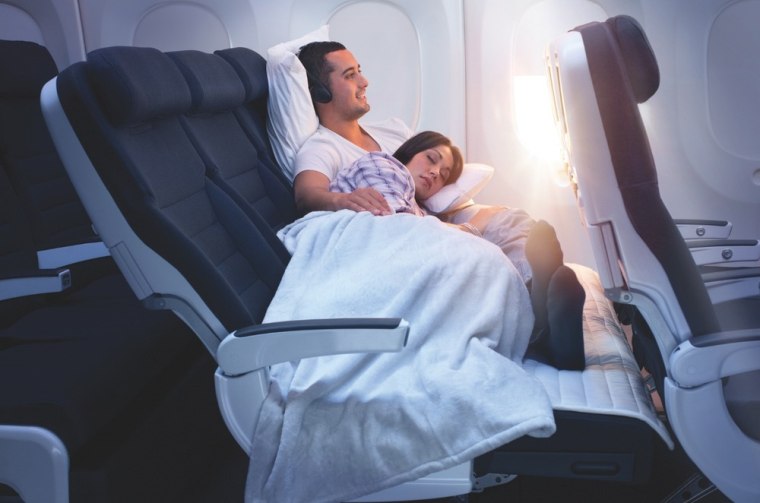New Yorker Marsha Sharpe, 31, travels constantly for her corporate music business SongDivision — logging trips to Turkey, South Africa and across America. But she’s no longer flying business class. “Economy has become the new black,” says Sharpe.
Fortunately, even as cash-strapped airlines raise fees and cut services, there’s a countervailing trend that has gone largely unnoticed by disgruntled travelers: economy class is getting better. Some airlines are introducing amenities and getting creative with seat design to lure budget-minded travelers like Sharpe. Where once business class was the primary revenue engine, it’s increasingly important that every cabin and every seat is both profitable and comfortable.
This change started in the early 1990s, when safety certification changes forced airlines to tweak their seats across the craft, explains Vern Alg of Aircraft Interiors Expo. Materials like aluminum and titanium have brought about new design possibilities, he says, and due to the rising price of fuel, “there’s pressure on airlines to have seats that are lighter and more comfortable.”
Leave it to the Germans to engineer a simple-yet-brilliant upgrade to economy-class seating. Lufthansa embraced seat manufacturer Recaro’s pioneering design, purchasing 32,000 new seats across the fleet. The seats themselves have been thinned down (without compromising comfort) and the magazine pouch shifted from knee height to behind the tray table to increase legroom.
There’s no better catalyst for change than competition, lately in the form of new models: the Airbus A380 and the Boeing 787. As airline companies snap up these new planes, they have a chance to reimagine the economy-class cabin in hopes of placating both profit-seeking shareholders and comfort-craving passengers. Japan’s ANA, for instance, is outfitting its new 787 fleet with gender-segregated bathrooms that have windows and bidet-toilets (“Washlets”) that offer warm, pressurized water jets for a fresher clean than one-ply paper.
Of course, not all creative ideas take flight. The semi-standing Skyrider seat that would offer just 23 inches of legroom — an experience compared to riding horseback — was widely shunned last year. But travelers have embraced a revolutionary loveseat-like arrangement for couples that Air New Zealand has nicknamed “Cuddle Class.” It’s an economy-class row of three seats that converts to a bed with the touch of a button.
Now if only they could come up with a seat that prevents jet lag.
More from Travel + Leisure
